Understanding Autotransformer and Variable Autotransformer
But there is a type of transformer that has only one winding that is known as an autotransformer. This article will explain how an autotransformer works, its efficiency, types, advantages, disadvantages, and applications.
What is an Auto-Transformer?
An Autotransformer is similar to the conventional transformer, except for the fact that it has only one winding that is wound on a laminated core. This winding is split into primary and secondary windings through tapping. A portion of the single winding is common for primary windings as well as secondary windings. It is known as an autotransformer since it has a distinct winding that plays the role of primary and secondary windings itself.
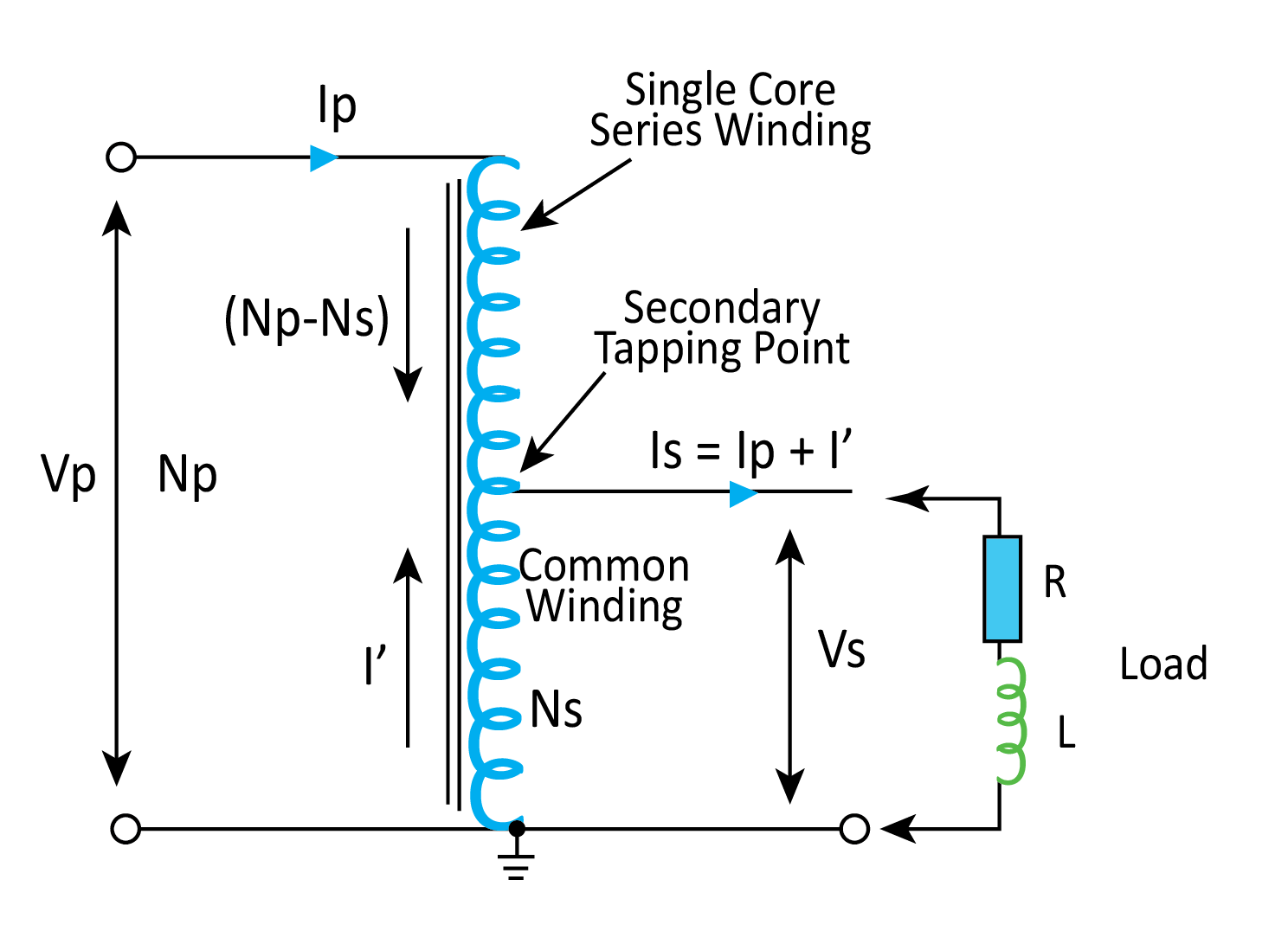
Effectiveness of Autotransformer
An autotransformer is more efficient as compared to an ordinary transformer having two windings. It is because it has a compact size and reduced cost. Furthermore, there can be mainly two types of losses in transformers that are copper losses and core losses.
- Due to less copper winding used, it also has less copper losses.
- It also has a small core; therefore, core losses are also smaller than conventional two-winding transformers.
Autotransformers can be 99% efficient in favorable conditions. The efficiency of the autotransformer is calculated by the given formula:
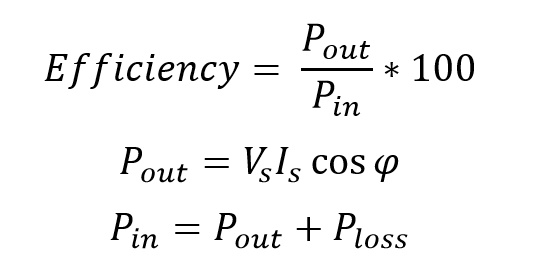
As the losses of autotransformers are less than that of conventional transformers; therefore, autotransformers are more efficient.

Types of Autotransformers
There are mainly three types of autotransformers that are classified according to the function they perform.
These types are one by one discussed below in detail.
Step-Up Autotransformer
The step-up autotransformer is used to increase voltage level by including more portion of the winding in secondary windings as compared to that of secondary windings. We can get high voltage at secondary terminals by giving low voltage input at primary terminals.
However, according to the law of conservation of energy, the power cannot be increased through secondary windings. Therefore, when voltage is increased on the secondary side, the current minimizes on the secondary side due to Ohm’s law.
Given below is the diagram of the Step-up autotransformer:
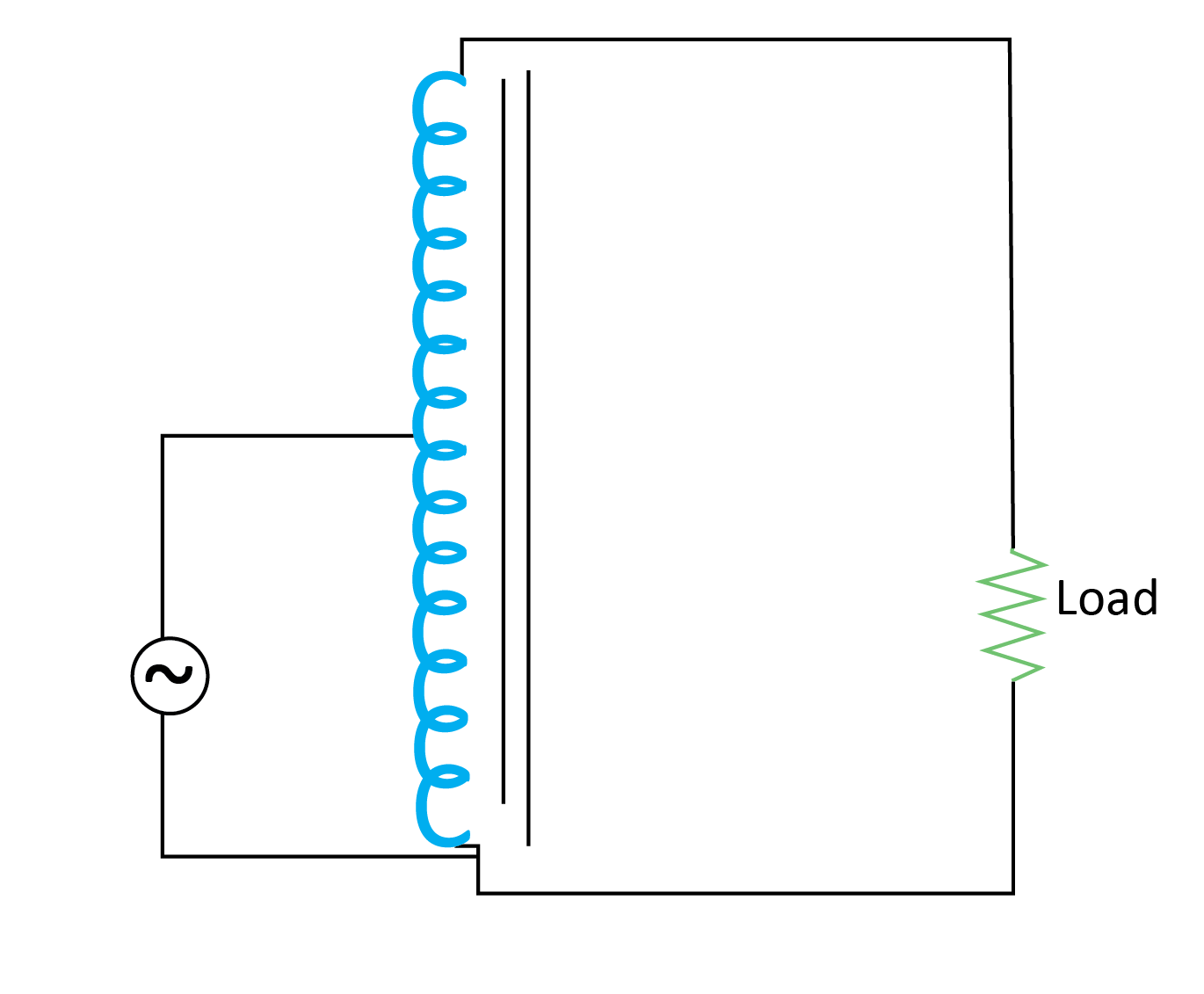
Step-Down Autotransformer
The step-down autotransformer is used to decrease voltage level by including more portion of the winding in primary windings as compared to secondary windings. The load is connected by tapping less number of loops in secondary windings. So, low voltage at secondary terminals is obtained by giving high voltage input at primary terminals.
However, according to the law of conservation of energy, the power cannot be decreased on the secondary side. Therefore, when voltage is minimized on the secondary side, the current maximizes on the secondary side following Ohm’s Law.
Given below is the diagram of the Step-down autotransformer:
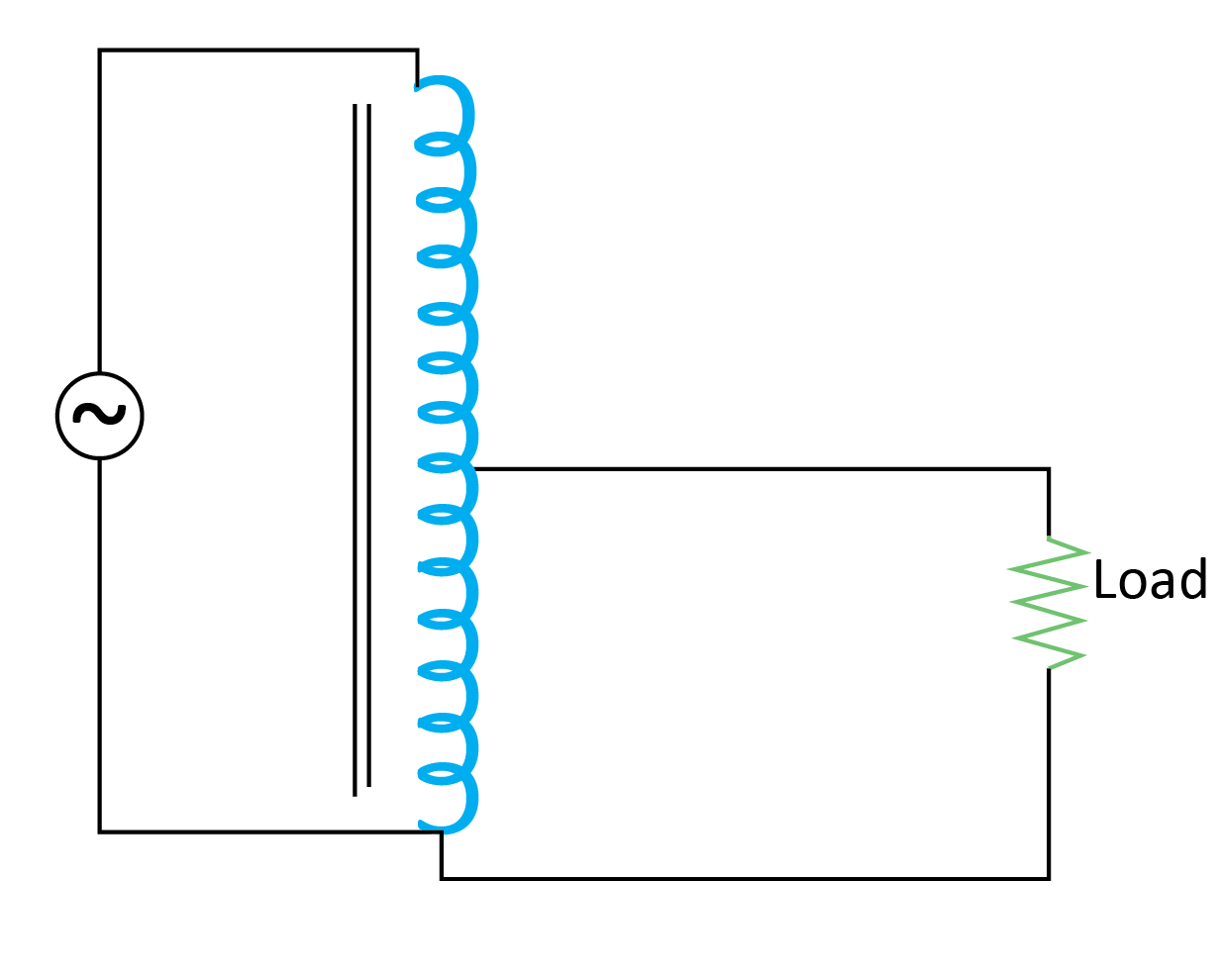
Variable Autotransformer (VARIAC)
The variable autotransformer also known as VARIAC has only one winding like an autotransformer. However, instead of tapping secondary voltage at a fixed point, the variable autotransformer uses a carbon brush for tapping secondary voltage.
The carbon brush rotates or slides along primary windings and makes contact with it to supply the required voltage. It allows the secondary voltage to vary from zero volts to a voltage equal to the supply as per the position of the carbon brush.
The position of the carbon brush is changed through a knob. So, it can also be said that the output voltage of a variable transformer is proportional to the angular rotation of the knob. Therefore, variable transformers are also called voltage regulators. They can also be transformed into automatic voltage regulators by including some sensory circuits.
The variable transformers are mostly used in science labs and laboratories. They are used as voltage controllers, temperature controllers, regulators, etc.
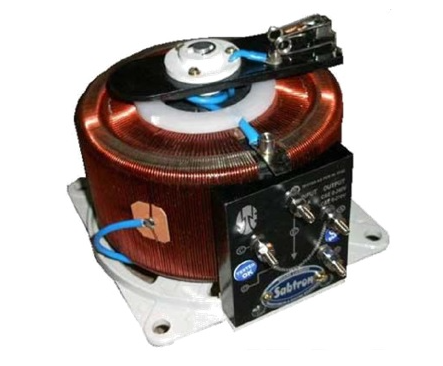
Autotransformer Example
An autotransformer is required to step up a voltage from 220 volts to 270 volts. The total number of coil turns on the transformer main winding is 2160. Determine the position of the primary tapping point, the primary and secondary currents when the output is rated at 12KVA and the economy of copper saved.
Solution
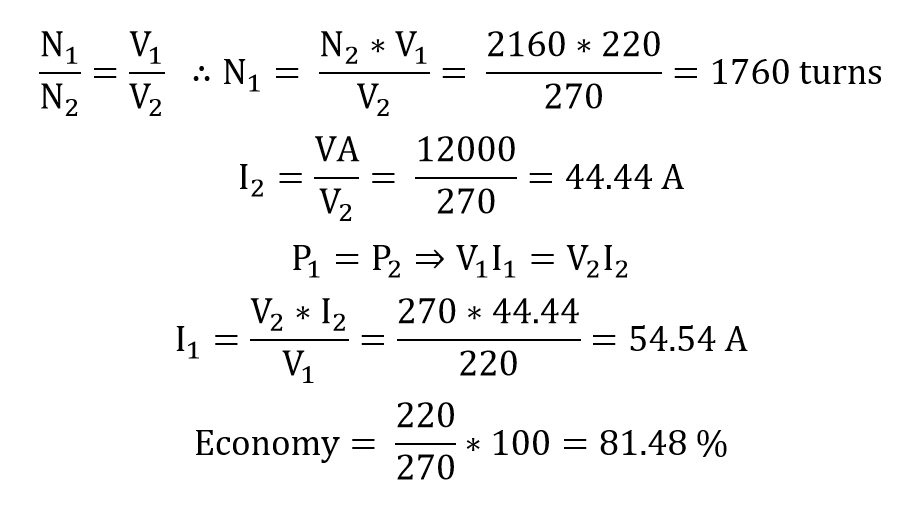
Advantages of Autotransformer
Autotransformers are more advantageous than ordinary transformers because of their low cost, and compact shape. They also provide better regulation due to adjustable secondary voltage. Furthermore, they have less copper and core losses as compared to ordinary transformers.
Disadvantages of Autotransformer
Although autotransformers have many advantages over conventional transformers, they are not widely used because of some disadvantages.
The primary disadvantage of an autotransformer lies in the non-isolation of its primary and secondary windings. Therefore, in the case of step-down voltage, if there is a gap in the secondary winding then all or primary voltage will appear across the secondary winding, and it will be damaging to both equipment and operator.
This limitation makes them usable only when there are slight differences in input and output voltages.
Applications of Auto Transformers
Autotransformers are widely used where there are fewer variations in input and output voltages. They are used in motors, such as synchronous, induction, squirrel-cage, and slip-ring induction motors, for starting purposes. They are also used in laboratories for testing purposes. Moreover, they are used as boosters to increase voltage levels for Air conditions, etc.
Conclusion
Autotransformer is a type of transformer that has only one winding that performs the function of both primary and secondary winding. It can be used to step up, step down, or regulate voltages. The kind of autotransformer that plays the role of voltage regulator in different circuits is a variable autotransformer or VARIAC. Autotransformers have several applications in automation industries, laboratories, and electrical systems.
Source: linuxhint.com
